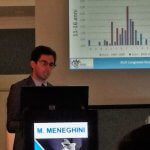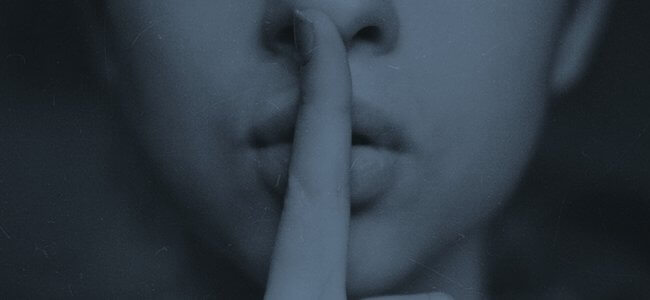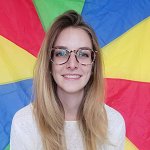Frontotemporal dementia: what it is, symptoms and rehabilitation

The editorial staff of Emianopsia has the pleasure of hosting Dr Graziana Romano: graduated in psychology with a master in cognitive neuroscience. Dr Romano proposes a study on frontotemporal dementia.
Frontotemporal dementia: what is it?
This issue (DFT or FTD) identifies a heterogeneous group of non-Alzheimer neurodegenerative dementias that are characterized by the presence of degenerative-atrophic alterations of the frontal and temporal lobes.
Depending on the areas affected by brain degeneration, the disease may affect the frontal lobes, causing changes in behaviour or changes in emotion and personality, or it may concern temporal lobes associated with our ability to understand what we see or hear. Damage to temporal lobes can cause difficulties in recognizing objects, the ability to express themselves, or understanding their own language.
For this reason, it is an “umbrella” term for different pathologies or as an alternative of a pathology with different variants (which we will discuss later); it is also called presenile dementia (as opposed to dementias which are usually more senile, such as vascular dementia) for the early onset (fourth, fifth decade of life, 60% of cases occur between 45 and 64 years) and for a marked familiarity, sometimes around 50% of cases.
It is oftentimes mistaken for an early form of Alzheimer’s disease (for further information, please refer to the article: Alzheimer’s: cases destined to double every 20 years); in the latter however it is the memory that is primarily compromised, while the DFT signals onset with personality changes sudden and behavioural/motor disorders in the absence of pre-existing psychiatric or neurological pathologies, and only afterwards due to a partial memory loss, together with the increasing cognitive and motor deficit.
It is a neurodegenerative disease, therefore progressive and terminal. Its average course varies from 5 to 10 years, but in some cases, it can also last for more than 20 years.
Types of frontotemporal dementia
These cases of dementia can be labelled in:
Dementia with behavioural variables (cortical atrophy of the frontal lobe)
A change in character and a disrupted social behaviour (behavioural variables) are the dominant and most common characteristics at the onset and during the disease. Symptoms manifest themselves with changes in behaviour and personality, as well as possible emotional changes and impaired judgment. For example, difficulties may arise in maintaining self-control or managing one’s aggression, with tendencies to irritability.
Usually, people who are affected by this illness are unaware of these changes or show little consideration for the impact their behaviour has on others. As the disease progresses, it is possible to observe less and less involvement in daily activities and a tendency to close in on themselves. Brain degeneration can also cause excessive drinking or eating, a tendency to constantly talk and say obscene or embarrassing things, impulsiveness, and disinhibition.
Dementia with declining communication skills
With Primary Progressive Aphasia, we can clearly notice the linguistic variant of frontotemporal degeneration. It is called linguistic variant, due to the prevailing presence of language deficits, and can be distinguished in:
- Primary Progressive Aphasia not fluent/agrammatic;
- Progressive Aphasia Primary semantic variant;
- Progressive Aphasia Primary logopenic variant.
Compared to the behavioural variant of the frontotemporal lobar degeneration, linguistic variants are characterized by a greater awareness of deficits. However, many points of the degeneration overlap, involving both the linguistic and behavioural spheres.
The non-flowing/agrammatic variant (cortical atrophy of the frontal region)
When the deficit is manifested by the non-fluent/agrammatic variant, people lose the ability to form complete sentences and sense, but seem to retain the meaning of words.
There are changes in the ability to speak, read, and write. People who are affected can usually understand what they hear or read, but their vocabulary and resources to express themselves are increasingly limited, speech becomes stunted and ungrammatical, full of wrong words, sometimes in assonance with those they would like to pronounce.
The semantic variant (cortical atrophy of the anterior temporal lobe)
Here, too, the brain areas affected are those designated to speech. However, unlike first progressive non-fluent aphasia, people with semantic dementia speak, read, and write correctly from a grammatical point of view but no longer know how to call things by their name, do not grasp the meaning of words and no longer recognize objects.
Essentially, there is a loss of the meaning of words, which is manifested by impaired naming and understanding. It is possible to find perceptual disorders characterized by prosopagnosia (damaged recognition of the identity of familiar and non-familiar faces) and associative agnosia (damaged recognition of the identity of objects). Other aspects of cognition, including autobiographical memory, are either intact or relatively well preserved.
The logopenic variant
This variant includes those patients who do not have the necessary criteria to be included in the other two types. The brain site involved is the posterior left and/or parietal region.
The main features of the logopenic variant are:
- slow and fluctuating spontaneous speech in which frequent pauses can be observed;
- anomalies and phonemic paraphrasing (substitution of letters within words and phrases);
- preserved understanding of single words but inability to understand sentences;
- lack of ability to repeat words just heard;
- normal articulatory production and use of grammar.
What is the diagnosis based on?
Diagnostic orientation is suggested by:
- disinterest in physical care of the person, sadness and unjustified abuse;
- mood disorders and paranoia with sudden onset, but without the presence of a previous psychiatric disease in young age (e.g. bipolar disorder, schizophrenia, delusional disorder…);
- stereotypical, perseverative, compulsive and repetitive attitudes;
- crystallization of thought, delirium, anxiety, unjustified aggression combined with impulse control disorder;
- disinhibition and hypersexuality or, conversely, apathy, shyness and anhedonia;
- in some cases eating disorders (DCA) such as bulimia alternating with anorexia or vice versa may be present;
- logorrhoea alternating with mutism and aphasia;
- early apraxia (inability or difficulty to perform simple tasks such as dressing properly), dyspraxia (inability or reduced ability to plan and organize intentional actions, aimed at achieving a specific purpose), in some cases echopraxia (mimicking other people’s behaviour) and echolalia (repeating words);
- cognitive decline but without severe memory loss (preserved for a long time, with rare and fluctuating amnesia);
At an advanced stage it is also possible to find:
- possible parkinsonism, tremor at rest, ataxia, possible disused muscle atrophy, strong stiffness, urinary incontinence, dysphagia, respiratory disorders; amimia or hypomimia (loss or reduction of facial expression, as in Parkinson’s)
For the correct diagnosis it is always advisable to perform instrumental examinations, such as structural and/or functional brain imaging to detect the actual brain atrophy, EEG, and a specific neuropsychological assessment.
How does rehabilitation take place??
It is assumed that the neuroplastic capabilities of our brain, are optimized through rehabilitation training, thus allowing the achievement of maximum possible autonomy and independence through the recovery and/or compensation of impaired cognitive and behavioural skills.
Classical rehabilitation
It includes speech exercises or pen to paper, designed to stimulate specific functions, or from external active aids, such as diaries, guided use of the calendar, maps, blackboards, recorders, and lists (compensatory tools)
Computerized rehabilitation
Considering rehabilitation in cases of frontotemporal dementia, it is deemed more profitable to use a PC. The patient is offered task-specific exercises stimulating from the cognitive, graphic, and acoustic point of view.
If language skills are also lacking, it is essential to combine cognitive rehabilitation with speech therapy, for the rehabilitation of speech and aphasia.
Bibliography
- Loeb, E. Neurologia di Fazio Loeb, Roma, Società Editrice Universo, 2003, pagine 1049-1053.
- Pino, O. (2017). Ricucire i ricordi. La memoria, i suoi disturbi, le sue evidenze di efficacia dei trattamenti riabilitativi, Milano: Mondadori Education S.p.A.

You are free to reproduce this article but you must cite: emianopsia.com, title and link.
You may not use the material for commercial purposes or modify the article to create derivative works.
Read the full Creative Commons license terms at this page.









